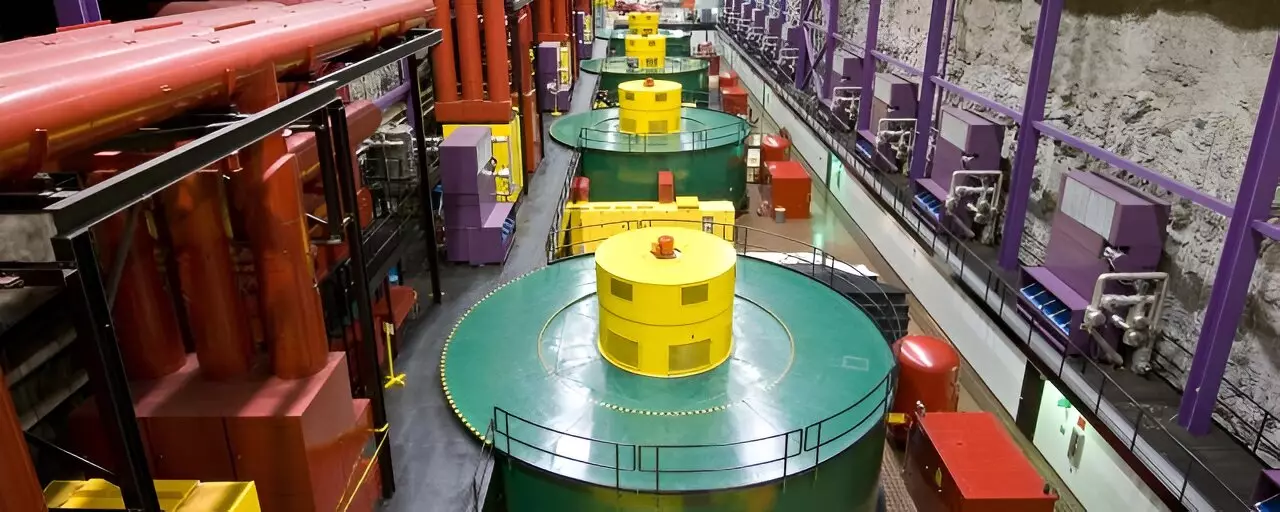The stability of the electric grid is an ongoing concern as the world increasingly relies on intermittent renewable power sources. In recent years, scientists at Oak Ridge National Laboratory and the University of Tennessee, Knoxville, have made significant progress in predicting grid stability using signals from pumped storage hydropower projects. This article delves into their groundbreaking algorithm and its implications for the future of the electric grid.
Hydropower has long been recognized as a reliable and renewable source of energy directly connected to the grid. Water spinning large turbines provides inertia, which is crucial for maintaining the balance between power supply and demand. Pumped storage hydropower (PSH) takes this concept further by utilizing surplus electricity during low demand periods to pump water from a lower reservoir to an upper reservoir, effectively creating an energy storage bank. In times of high demand, the stored water is released, generating electricity through the turbines and stabilizing the grid.
The Challenges of Renewable Energy Sources
While the integration of renewable energy sources such as solar and wind power is commendable, they do present unique challenges to grid stability. Unlike traditional power plants, solar and wind generation sources provide minimal inertia since they are connected to the grid using inverters. These inverters convert the direct current power generated by renewable sources into alternating current power, which is necessary for transmitting electricity over long distances. Consequently, grids reliant on renewable energy have less tolerance for sudden changes such as storm damage or unusual demand peaks.
A Novel Algorithm for Stability Prediction
To address this challenge, Yilu Liu and her colleagues developed a groundbreaking algorithm that harnesses the distinctive signal produced by PSH projects. They combined this signal with comprehensive grid data obtained from low-cost sensors deployed across the country through the FNET/GridEye system developed by Oak Ridge National Laboratory and the University of Tennessee, Knoxville. By integrating the PSH signal and sensor data, the algorithm provides real-time and highly accurate estimations of grid inertia, offering critical situational awareness for grid operators.
One of the key outcomes of this research is a user-friendly visualization interface that assists grid operators in monitoring inertia and anticipating potential grid instability. The integration of the algorithm into this interface empowers grid operators to make informed decisions and take proactive measures in ensuring grid stability. Utility companies and power regulating authorities across the United States, particularly in regions with significant pumped storage hydropower capacity, have already validated the efficacy of this new method.
Preparing for a Renewables-Driven Grid
As the world increasingly embraces renewable energy sources, the role of grid situational awareness becomes even more critical. The method developed by Liu and her team provides a solution for monitoring grid inertia and preparing for potential grid instability. The algorithm’s ability to leverage the unique signal from PSH projects and low-cost sensor data demonstrates the value of pumped storage hydropower in enhancing grid stability. By effectively integrating renewables, such as solar and wind power, with PSH, the grid can maintain the necessary inertia to withstand sudden changes and optimize the use of intermittent energy sources.
The Importance of Collaboration and Validation
The research team involved utilities and power regulating authorities in the Western and Eastern United States to validate their algorithm and visualization interface. This collaborative approach ensures that the developed solution adapts to various regional grid dynamics and withstands real-world scenarios. The insights gained from this collaboration have been shared with prominent grid coordinating authorities, including the North American Electric Reliability Corporation, highlighting the value of pumped storage hydropower and the crucial role of inertia in the future of the electric grid.
The algorithm developed by Yilu Liu and her team represents a significant leap forward in predicting electric grid stability using signals from pumped storage hydropower. By combining the unique PSH signal with sensor data gathered through the FNET/GridEye system, the algorithm enables real-time and highly accurate estimations of grid inertia. The visualization interface further empowers grid operators, ensuring critical situational awareness and effective decision-making. As the world gradually shifts to renewables, pumped storage hydropower emerges as a vital component for maintaining grid stability and optimizing the integration of intermittent energy sources. Through collaboration and validation, the research team has demonstrated the importance of inertia and the immense potential of pumped storage hydropower in shaping the future of the electric grid.


Leave a Reply